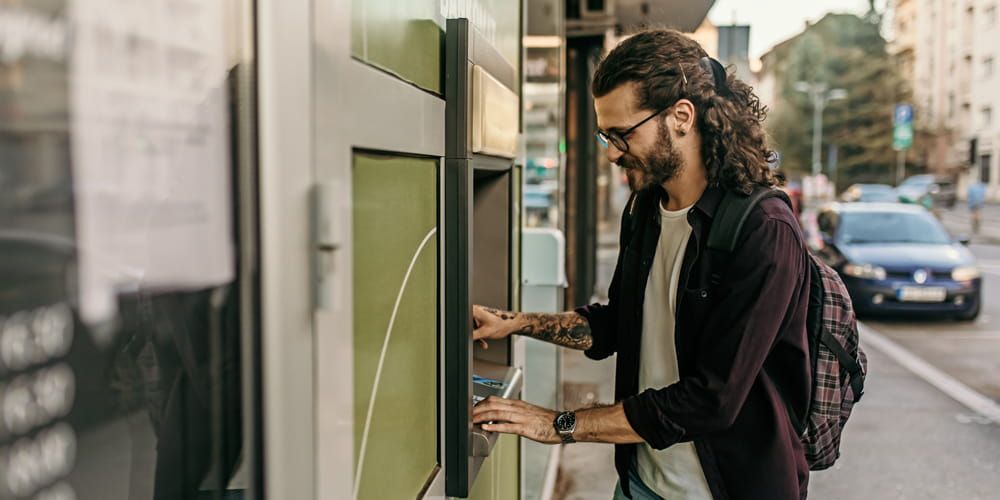Want to be savvier with your spending? Here’s five tips to take control of your savings
Savings

With the world opening up again following lockdown, it’s no surprise that we are all keen to get out and enjoy ourselves. However with those old temptations creeping back into our lives, it can become all too easy to dip into our savings account to pay for them - but at what cost?
Of course, we need to treat ourselves every now and then, however over indulging can have a serious impact on our savings. Amid the current cost of living crisis, many of us are starting to feel the pinch, so it’s no surprise that more people are dipping into their savings.¹
Want to learn how to stick to your savings goal? Here are some useful tips to keep you on the right track…
1. Get the right savings account for you
When it comes to your savings, one of the first things you should consider is putting your money somewhere separate from your regular account. Though nearly a fifth (19%)² of people don’t see the point in having a savings account, it can help to create a divide between the money you can spend freely and the money you should avoid spending.
Having the two sums of money physically separated will help reinforce that they have different purposes. As such, it’s best to ensure you’re putting your funds in a savings account that works best for you - and you can do this by weighing up a few different factors. What is your savings goal? How long are you willing to work to reach this goal? Do you have control over your spending? These are all questions you should consider before settling on a savings account.
With the cost of living rising and the future looking uncertain, an Instant Saver account may be more appropriate for you if you require the freedom to be able to dip into your savings if you need to. With an Instant Saver, you’ll be able to withdraw money whenever you want, which is a good option if you trust yourself to be disciplined with money but still need some flexibility.
With a Fixed Saver account you aren’t able to access your savings regularly, which can mean locking your cash away for anything from six months to five years. They offer a higher rate than an instant saver and can help those who need a little more discipline to control their spending.
Knowing exactly how much is sitting in your savings account is a great way to stay on top of your savings goal and build up funds for big expenses, such as buying a house - never mind the welcomed added interest!
2. Only take out what you need
Looking at our customer data, we found that withdrawals tend to be in round amounts, such as £2,000, £4,000, £5,000, and £6,000¹. With lump sums like this, even if the reason for the withdrawal is for a specific purpose, it’s likely that you’ll end up spending all of it - usually on impulse purchases. Though these may sound like small spends, having a withdrawal habit like this can steer you away from reaching your savings goal - it all adds up, after all.
Like many things, seeing is believing and having full visibility of your bank account is crucial when it comes to staying on top of your savings. It’s a good idea to have a mobile banking app so that you can clearly keep track of your balance and never be in the dark about your savings.
3. Avoid making impulse purchases
Naturally, with the number of products we’re exposed to through social media, plus those enticing discounts that regularly crop up in our emails, it’s easy to give into temptation and spend impulsively. It’s a common theme for many of us that, once we start, it’s challenging to stop.
The key isn’t to completely reject the idea of buying anything impulsively, but to find a healthy balance. You can achieve this by setting limits, such as allowing yourself one unplanned purchase a month or rewarding yourself only on special occasions. Setting up a separate savings pot for those smaller purchases and treats will also help keep your long-term savings goal safe from impulsive spending.
4. Budget extra for holidays
After several years of staycations, holidays abroad are now able to go ahead - so it’s no surprise that many of us are aiming to start travelling again. The highest amount of withdrawals from our savings accounts occurred during August and September last year¹, which is likely down to unplanned summer holiday spending.
To prevent this from happening this year, it’s important to plan and budget ahead of your holiday so that you don’t overspend and dip too deeply into your savings. You should account for all costs by making a list of every purchase you’ll need to save for - from booking the flights and accommodation, to spending money when you get there.
With extensive research and careful planning, you should be able to develop a well-informed holiday savings budget - one that you can work towards ahead of time. We also recommend setting a daily allowance so that you have a rough idea of how much you should be spending each day, which will help you keep on track and help you balance out any splurges. You could also create a contingency fund for unexpected expenses that may arise on your trip - such as medical emergencies.
5. Change the way you look at your money
To reach your savings goal and reduce how often you dip into your savings, your best bet is to consider the different options available and develop useful thought processes. By personalising your savings plan and finding a system that works for you, you’ll be more likely to stick to it. If you are someone who struggles to develop good saving habits, you could start by asking yourself the following questions:
- Is your current savings account suited to your spending habits?
- Would a mobile banking app help you have visibility of your savings?
- Would it help to wipe automated card details from your favourite shopping websites?
- Have you considered removing device payment features such as Apple Pay?
- Do you currently make payments for things you don’t use, such as Amazon Prime or a gym membership?
If you find yourself constantly leaning on habits that make spending a little too simple, you could consider putting blockers between you and your savings. If spending money becomes more of an effort, you’ll be less likely to spend unnecessary amounts and reduce your savings. Making small changes, such as reducing your contactless payments and wiping your automated card details from shopping sites, can make a difference.
Ultimately, having a healthy balance and being fully aware of your spending and savings habits is essential. While it’s okay to dip into your savings from time to time, having a keen eye on your spending and making positive changes to your habits can help you achieve your savings goal - whatever it may be. For any more information on savings or to open an account, visit our savings page.
References
¹Data obtained by Atom bank on customer’s savings behaviours from May 2020 to April 2022.
²Data obtained using YouGov profiles
